Your Questions: What Is The Difference Between First And Business Class?
I’ve had various questions along the lines of, “What is the difference between First and Business Class?“, “… are business class tickets refundable?”. So I’ve decided to address some of them here so maybe they can benefit others who also may be curious.
Today, fast tracking queues, champagne, multi-course meals in fine china and flat beds with luxurious beddings are all synonymous with First & Business Class travel.
The lines can sometimes get blurry. Especially when you factor in the variations of product and services between different airlines. So much so that, some of the best Business Class products today look superior to even some currently available First Class products. But first..
A Fascinating Journey Through the Evolution of Air Travel Classes
Embarking on a voyage through time, we delve into the captivating evolution of Business and First class, witnessing their dramatic transformation over the decades. In the early days of aviation, when only a privileged few soared the skies, a realm of opulence awaited those fortunate travellers. The very idea of flying was a luxury in itself.
Picture this: the 1930s, an era of aviation that conjures images of Pan Am’s majestic Martin M-130 seaplanes with their enticing double sleeper bunks for those enchanting overnight journeys to Hawaii. The Imperial Airways’ flying boats, akin to grand voyages across the Empire, stand as a testament to an era when flying was as much about the experience as the destination.
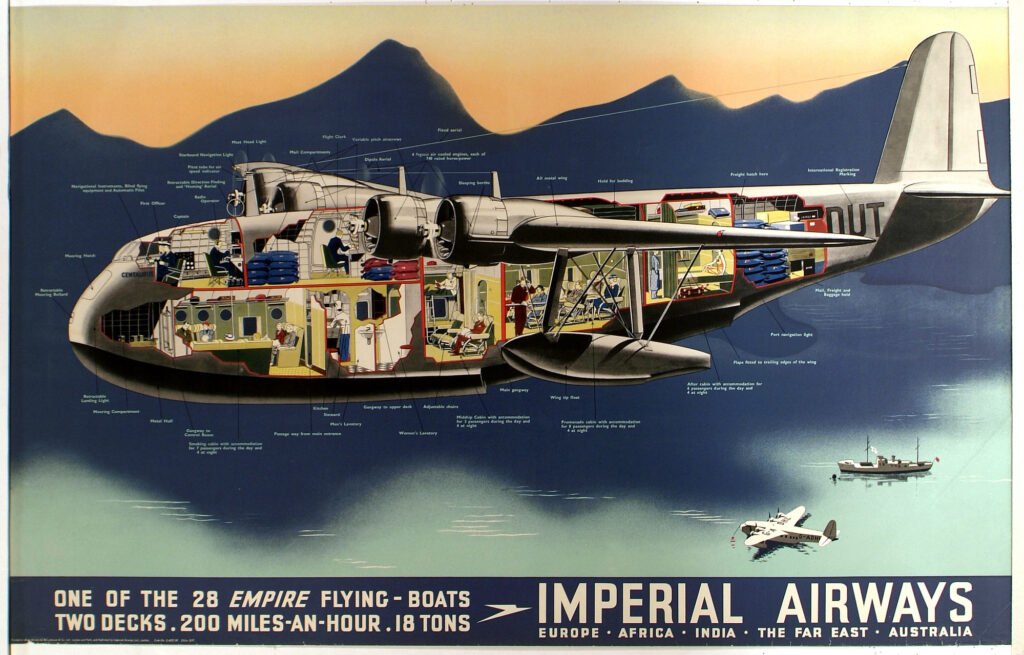
In a time when aircraft designs were fledglings taking flight, planes swiftly came and went, evolving faster than a modern-day runway show. Think of the audacity of commercial flights linking London to Paris, Amsterdam, and even spanning the vast Atlantic Ocean.
The “Silver Wings” flights of that era, deliberately unhurried, gifted passengers with an elaborate meal service, fostering a culinary journey above the clouds. These cabins whisked passengers away at lower altitudes, offering a unique vantage point of the world below.
The Jet & “Golden Age”
Fast forward to the vibrant 50s, 60s, and 70s – air travel’s golden age. The experimental phase of aviation had paved the way for an enduring reality.
Enter the era of iconic aircraft like the McDonald Douglas DC-8 and the Boeing 707, which not only redefined aviation but laid the foundation for contemporary aircraft design.
As these marvels of engineering transcended their role as mere carriers of mail and freight, passengers were the new stars. With more space and comfy First-Class seats, the experience was lavish, yet the grand visions of the early days were, in part, restrained – no flat beds in sight.
Flying gradually shifted from a luxury to a mode of transport, and the arrival of the legendary 747s democratized air travel.
The origins of classes remain shrouded in intrigue, with Pan Am at the helm of flying luxury, boasting upper-deck lounges and sprawling recliner seats aboard their 747s.
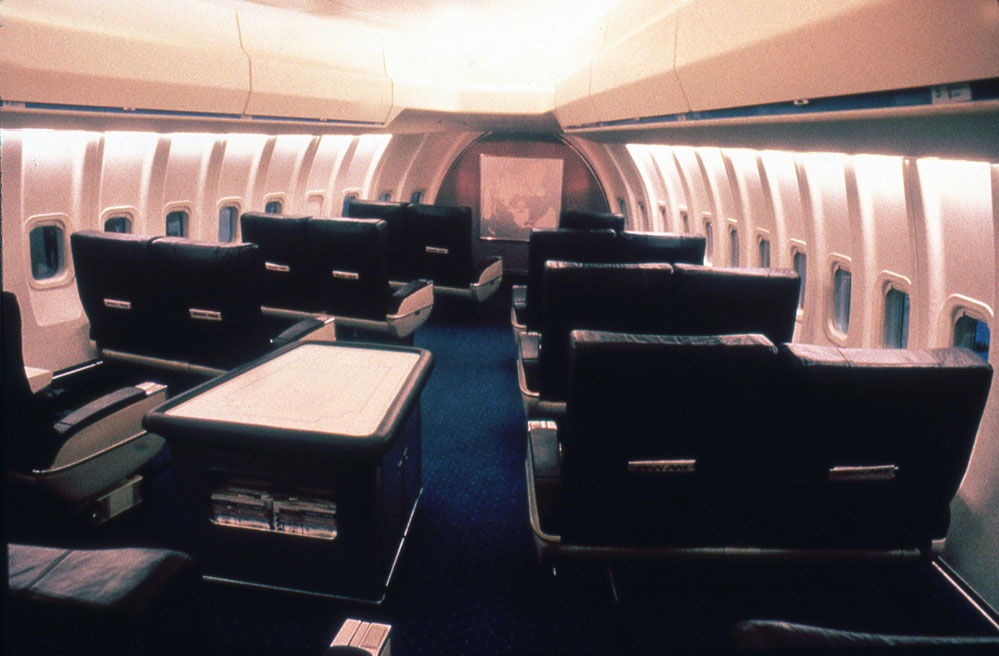
Simultaneously, other airlines grappled with spacious new aircraft and a lack of passengers to fill them, prompting innovation and a focus on dropping airfares to invite more travellers.
And so, Tourist Class emerged, segregating fare brackets and reshaping services. The chasm between First Class and Coach expanded over the years. Airlines like Thai, Japan Airlines, and Qantas began discerning between discounted and full-fare economy passengers, ushering in a new era of tiered services.
The Pan Am Clipper service is one such example
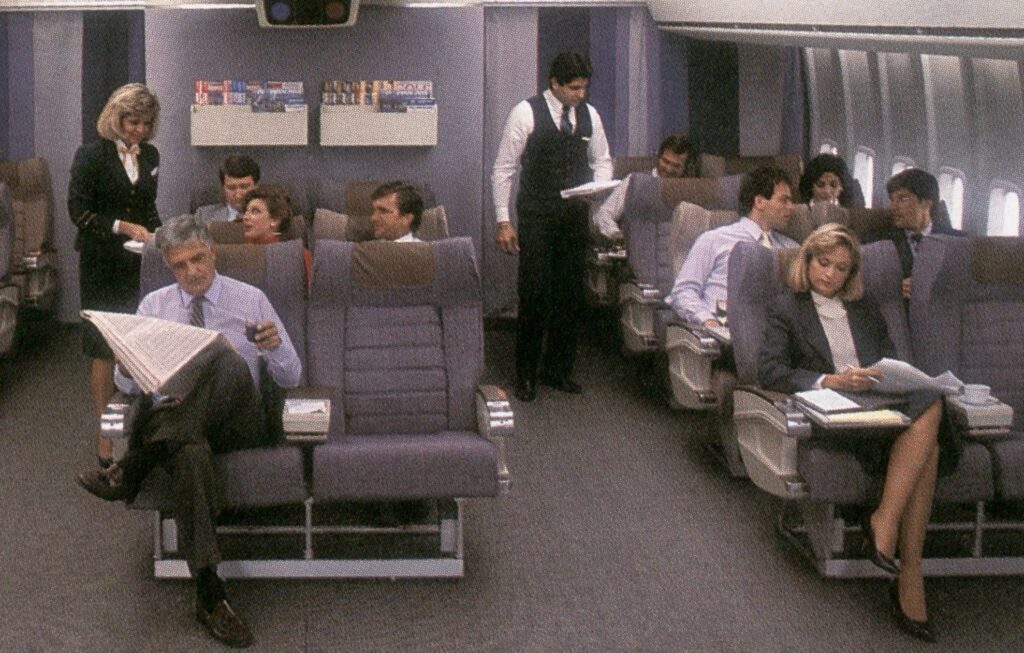
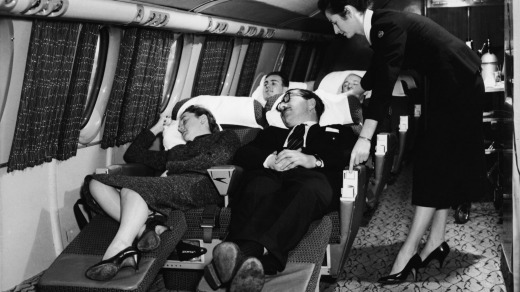
As demand and the convenience of flying enticed more people. Fliers were suddenly faced with crowded departure lounges and noisy aircrafts. In an interesting side note, airlines were bound by regulations on the fares they could charge for Economy or First Class air services.
Thus airlines had to get more inventive. The concept of tiered services took hold more prominently.
The Birth Of “Business Class” We Know Today
In the dynamic 70s, airlines faced a conundrum – the stark divide between First and Coach beckoned for a fresh offering. Seizing this opportunity, airlines ingeniously transformed excess seats into a newer, swankier class catering to a burgeoning clientele.
Thus, Business Class was born, initially introduced by British Airways as “Club Class” and by Qantas as the world’s first “Business Class” in 1979.
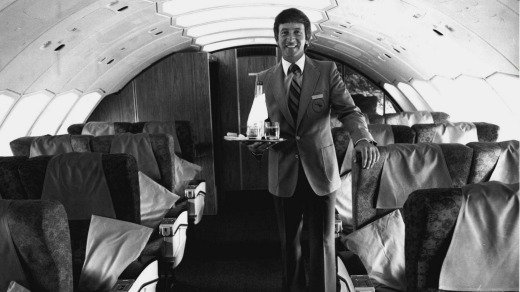
As rivals observed the shift, Business Class quickly proliferated, revolutionizing the inflight experience. British Airways and Air France raised the stakes in the mid-90s with fully flat bed seats, while Virgin Atlantic flaunted its flamboyant “Upper Class,” sparking an iconic rivalry.
Throughout the years, Business Class matured, undergoing incremental upgrades and personalized services. BA introducing the worlds first Business class to feature fully flat beds, in year 2000.
Yet, the alluring glamour of Middle Eastern and Asian carriers later often outshone its offerings.
Room for a NEW class, again!
Once again, Business class had become so extravagant, Cattle Class had moved in the other extreme.
Enter the birth of a new class – Premium Economy – catering to the growing gap between Business and Economy. Pioneering carriers crafted these intimate, private cabins with larger seats, more legroom, and enhanced dining options, elevating the middle-ground experience
Some of the best Premium Economy products offered today range from Japan Airlines, Eva Air, Air New Zealand as well as Virgin Atlantic. British Airways, “World Traveller Plus” as it calls it, is perhaps at the lower end of that spectrum
Likewise, First & Business class continued to evolve, gaining incremental improvements over the years. The main differentiators of First Class was the top shelf Champagnes and Liquor, on demand meals service and more privacy, with intimate cabins ranging from 4 up to 14 in larger aircraft for some airlines. First Class still offered the utmost care & exclusivity.
New Leap For Business Class
2017 heralded another leap forward with Qatar Airways’ QSuites and Delta Airlines’ Delta One Suites, featuring opulent privacy and cutting-edge technology. The lines between First and Business Class began to blur, ushering in a new era of inflight luxury.
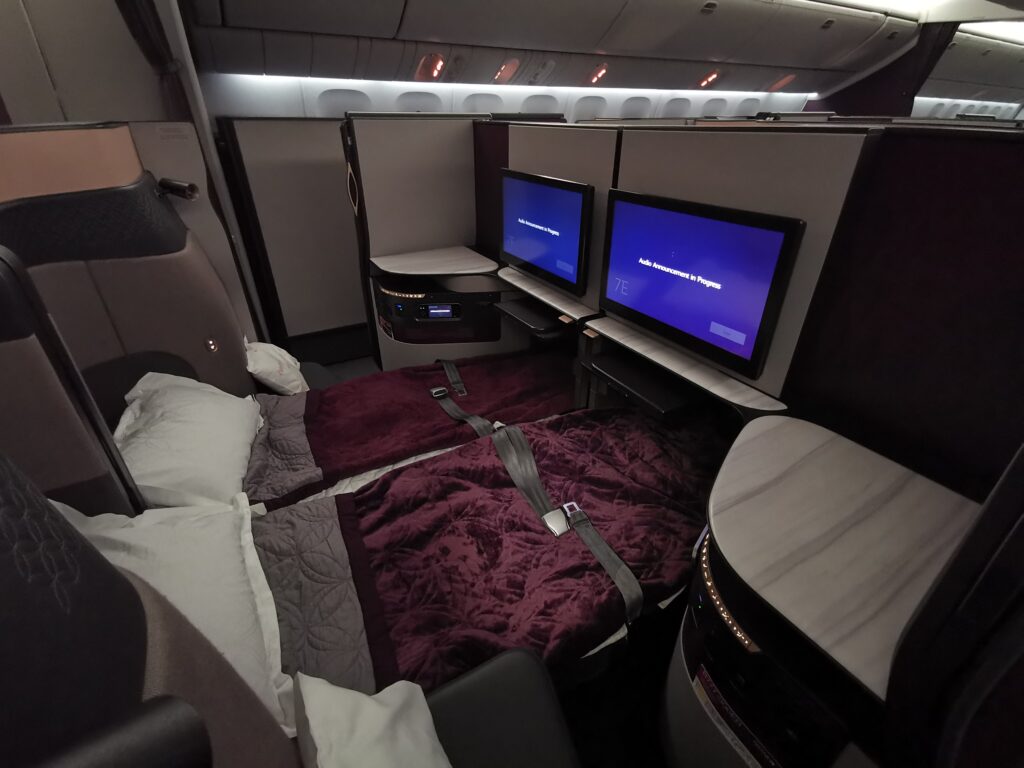
A Qatar Airways QSuite in Double Bed mode
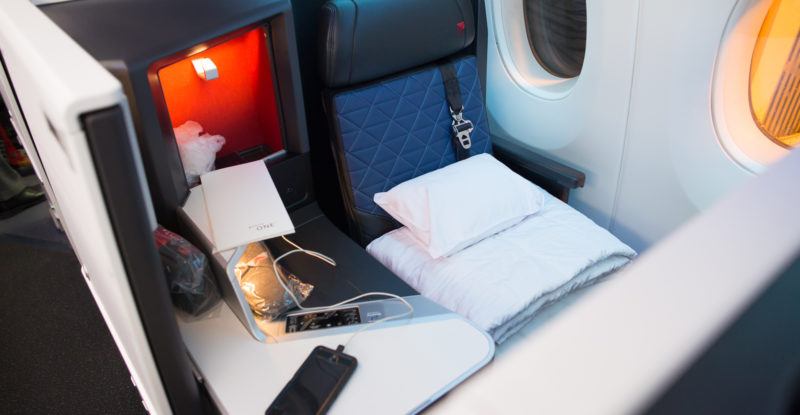
In this ever-evolving journey through the clouds, one thing remains certain: the skies are ripe with innovation, promising a future where comfort, luxury, and adventure converge in ways we can hardly imagine.
Business Class “Unbundled”
A recent development for Business Class may not be all too positive. Some airlines such as Emirates and this month Qatar have announced a “Business Class” basic or classic fair. This offers you the same product onboard, but with no lounge access, or seat selection in advance etc etc and there may be other restrictions coming?
Present-Day Difference Between First And Business Class
In the grand theater of modern air travel, Business Class emerges as a compelling protagonist, donning a mantle of luxury that often surpasses even the erstwhile magnificence of First Class. This transformation is not a mere stroke of happenstance; it is a symphony composed by the technological marvels of today that were absent from yesteryears.
The voyage down memory lane sometimes casts a rosy glow upon the days of old, whispering tales of lavish travel experiences. Yet, we must tread carefully on this nostalgic path. The reality is that our world has ballooned with globetrotters, making it a challenge to rekindle the intimate sense of exclusivity that once coloured air travel’s golden era.
Admittedly, the physical embodiments of today’s air travel are masterpieces of innovation. Nostalgia has a peculiar way of embellishing the past, often painting it with hues of brilliance that may never have truly existed. Pan Am’s legendary aura still lingers, albeit resurrected through skilful marketing.
The yearning for an unattainable allure may be a futile pursuit in the face of progress.
Present-day aviation ushers in a curious metamorphosis. Within the corridors of the same airlines, First Class and Business Class now share a kinship that borders on the indistinguishable
Observe ANA’s opulent “The SUITE” First Class
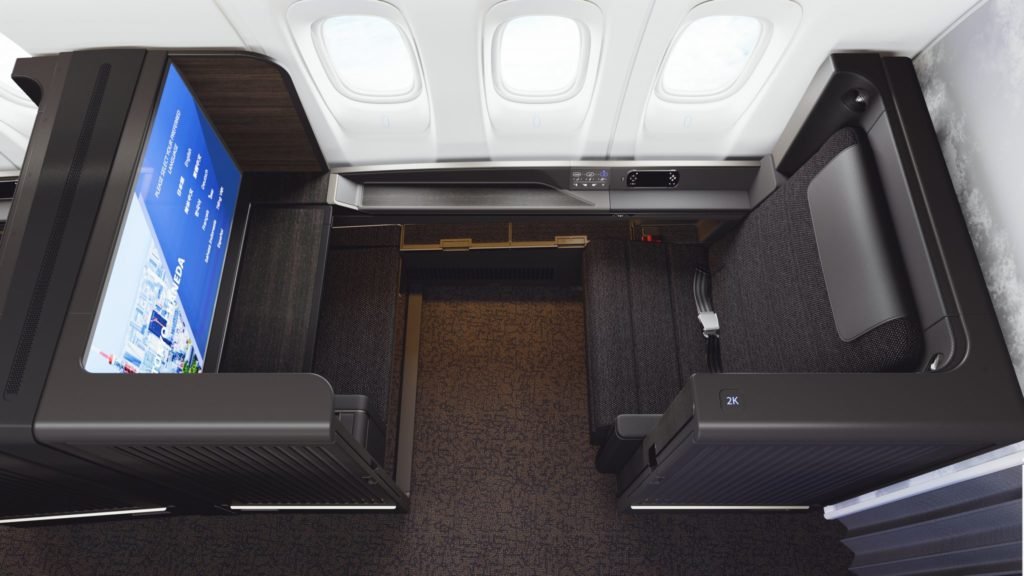
vs against its Business Class equivalent, “The ROOM.” 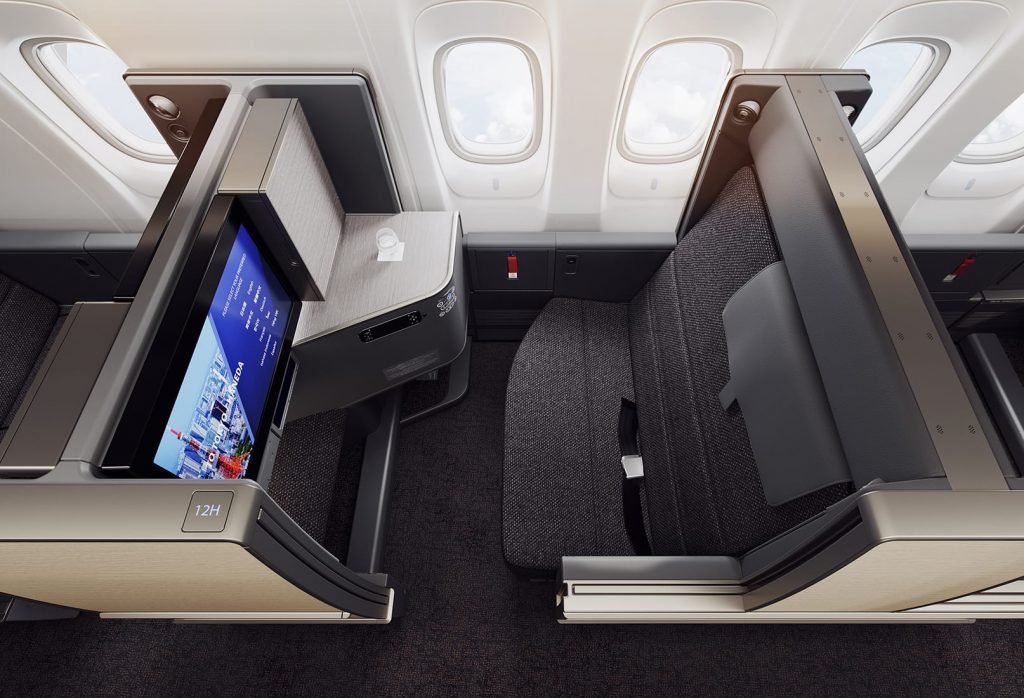
ANA The RoomTo the casual observer, the line between opulence and extravagance blurs.
or take British Airways updated new First Class…
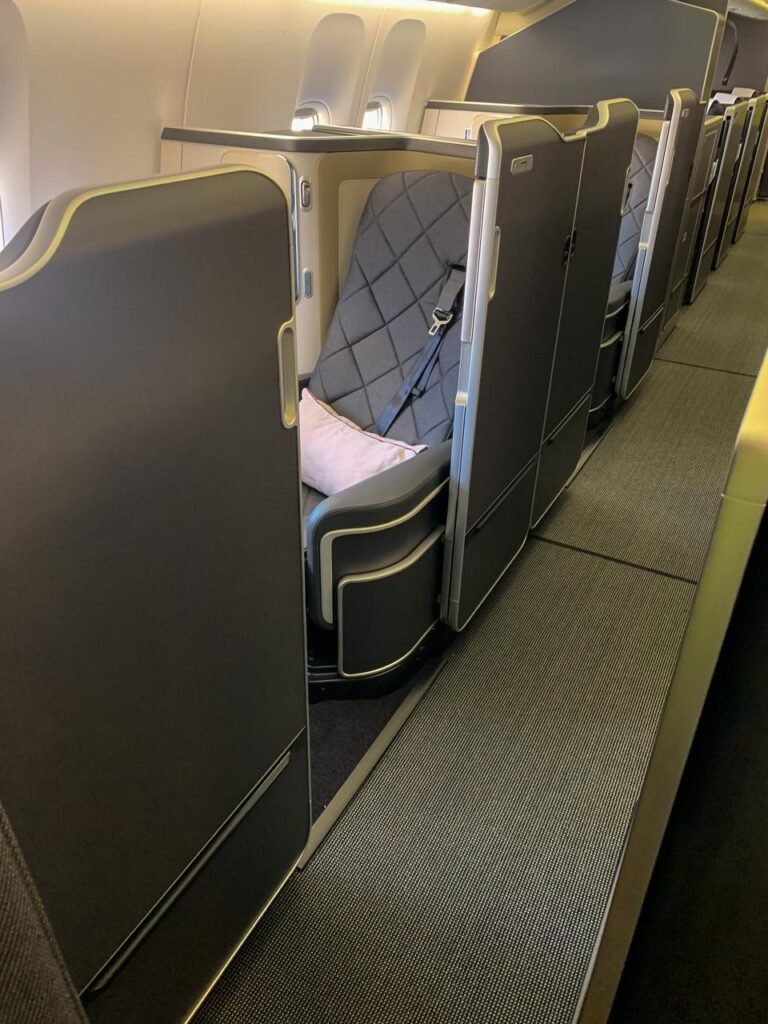
or their new Business Class Suites
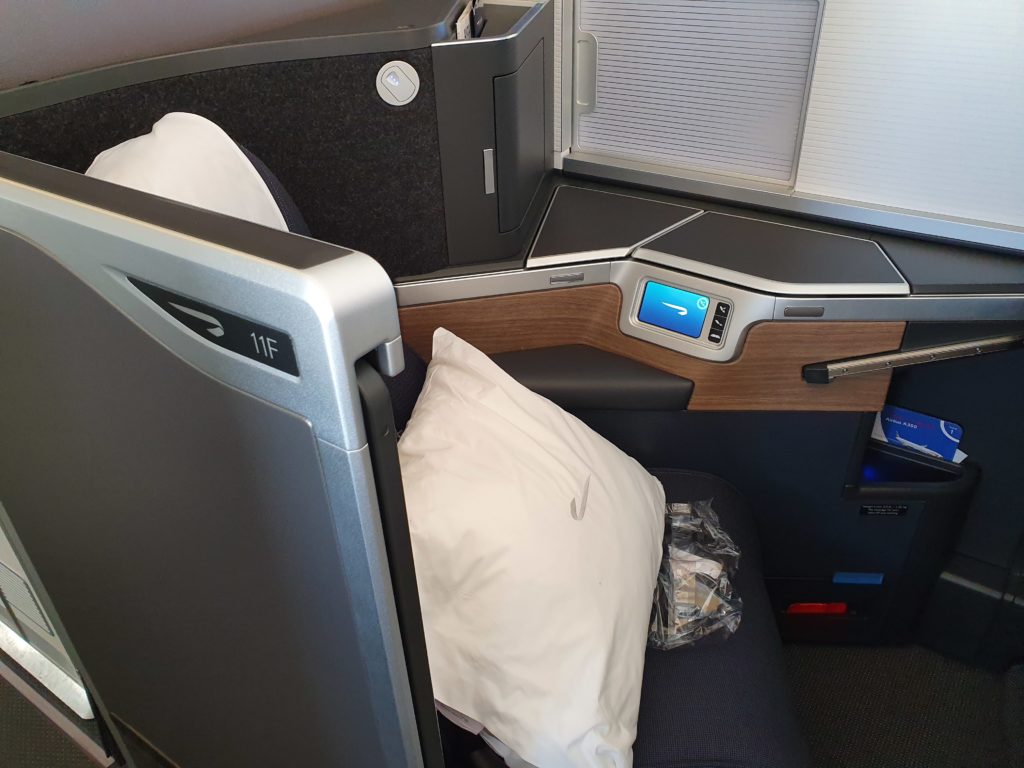
Venturing eastward, Korean Air‘s audacious move aligns First Class with Business, championing an identical seat for both classes.
In contrast, stalwarts like Air France, Emirates, and Cathay Pacific maintain a visible demarcation between these domains.
Ground Services
Ground services, a hallmark of distinction, create an ethereal divide. First Class lounges, reminiscent of divine sanctuaries, pamper passengers with culinary feasts rivalling fine dining establishments. Spas, concierge services, and limousine transfers elevate this experience to celestial heights.
Economy’s Relentless Retreat
In stark contrast, Economy finds itself locked in a relentless regression. The advent of the low-cost revolution has stripped away personal space and comfort, inch by inch.
Yet, within this reductive landscape, a silver lining gleams – the dramatic enhancement of entertainment and connectivity options. Personal HD screens, (albeit limited) Wi-Fi, and charging outlets are the modern-day gems adorning the passenger experience.
While meals and services remain ripe for enhancement without substantial cost, the peril of cannibalizing Business Class revenues curbs airlines’ enthusiasm for transformation.
The Future Of First Class
In a world where Business Class proudly flaunts its sumptuous offerings, First Class grapples with a dichotomy. For certain airlines and discerning passengers, the cost-benefit scale tilts precariously.
In the flight of the future, First Class’s prominence dims, becoming a rarer gem. Lufthansa and British Airways may pledge fidelity, yet their commitment wavers, manifesting in fewer aircraft adorned with First Class luxury.
The backdrop of Covid-19 adds a fresh chapter to this narrative. Airlines navigate uncharted terrain, grappling with a new financial equation, questioning the sustainability of First Class amidst shifting demand.
Intriguingly, a paradox unfolds – a tale of Business Class’s ascent to prominence, eclipsing the starry allure of First Class. As we traverse this evolving saga of the skies, one thing is certain: the flight ahead promises an intoxicating blend of innovation, luxury, and change.

Faze, founder of Wander Up Front and Elevate Your Stay, is a London-based travel specialist with a deep passion for aviation. With over 2 million miles flown, he has spent the last 7 years focusing on First and Business class experiences.
Faze provides straightforward, no-frills insights into premium airline products and services, sharing what matters to help travellers make informed choices.
Follow him on his adventures and behind the scene stories on Instagram !


